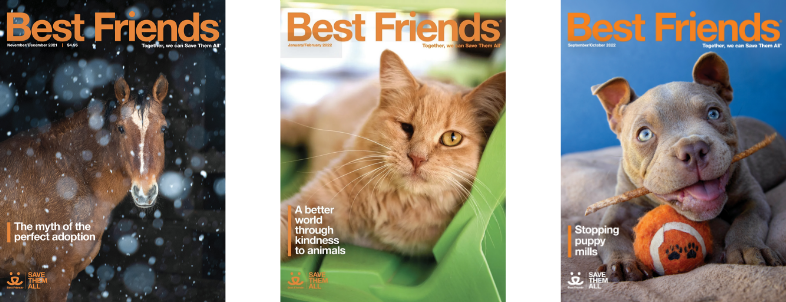Kids create works of heart to find pets homes
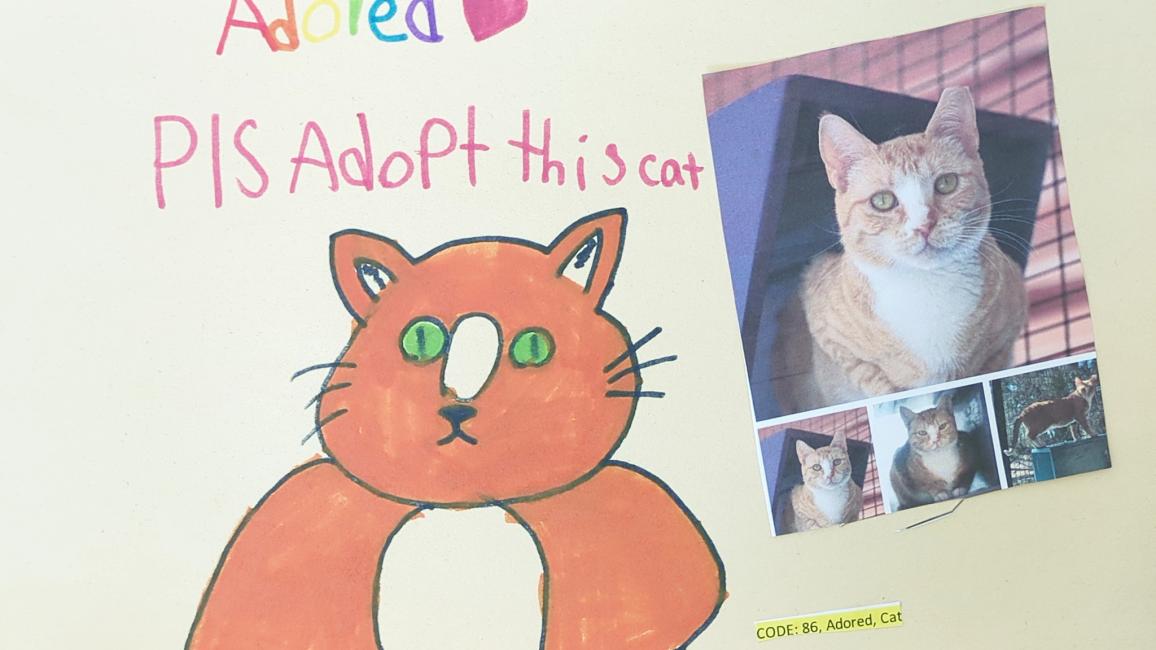
In 2020, in the early days of the COVID-19 pandemic, Terra Dyal of Spanaway, Washington, was looking for a way to help the countless dogs and cats who need homes. Like millions of others, she had recently started using the social media app TikTok, and it didn’t take long for its algorithm to discover that she had a thing for pets in shelters.
As her feed filled up with notices about dogs in need of homes, Terra inadvertently came across an article about a Virginia teacher whose students created artwork for adoptable pets. The kids would draw pictures of the animals and write corresponding accounts as if from the dogs’ and cats’ points of view to encourage people to adopt them. The drawings were posted on the animals’ kennels and shared on social media. The results were phenomenal, with numerous people motivated to bring those animals home.
Inspired, Terra started sketching adoptable dogs herself and sending her artwork to shelters in hopes it would help garner attention from people looking to adopt. “I was focusing mostly on senior dogs, ones that had medical problems, ones that had been there for a really long time,” she says.
Eventually, she decided to expand her personal project and take it to local schools so the children of Spanaway could get involved.
Terra knew this would not only shine a light on pets needing homes, but it would also tug at potential adopters’ heartstrings. After all, she says, “It’s hard not to be moved by a child’s first-person ad for a pet.”

Art with a heart
By the spring of 2022, when people across the nation were returning to work and some were relinquishing the animals they’d adopted during the pandemic, Terra became increasingly eager to do her part. Via TikTok, she connected with three shelters, which submitted photos and profiles of adoptable pets. She also enlisted three teachers at local elementary schools to share the animals’ information with their classes. The kids got to work drawing pictures of the dogs and cats and writing bios from the animals’ perspectives. The result? Fifty-nine pieces of art, one for every animal who needed a home.
“When I picked up the art from the schools, students delivered them to me at the front office,” Terra says. “Every single student who came to me asked the same question: Are there more animals? It gave me goose bumps.”
The shelters used the artwork in a variety of ways: displaying it on the kennels of the animals, showcasing it at adoption events, sharing it on social media, and even hosting art shows with proceeds going to the pets. “The shelters really got a boost out of having the kids’ art on-site, and I knew I’d be doing this again,” says Terra.
[Artists spread joy and highlight homeless pets]
She did just that a few months later, working with not only U.S. shelters but shelters in Canada and Lebanon, again using TikTok to connect with them. Four shelters sent photos and bios of adoptable animals, and four elementary school classes participated, resulting in 117 unique works of art for Hearts of Gold, Terra’s new and aptly named project. In a nutshell, Hearts of Gold involves children in creating art inspired by the likenesses of pets in shelters, as well as writing bios from the animals’ viewpoints. Participating shelters can then use the kids’ art and faux first-person accounts to promote the animals in myriad ways.
“This was when I realized how much I cherished working with the kids,” Terra says. “Around every corner, there was a school loaded with eager, loving children who were just as passionate about animals as I was. They put their hearts into their art, and the project went from saving the animals to (both) doing that and teaching kids that they can affect the real world.”
That December, Maury County Animal Shelter in Columbia, Tennessee, shared the art created by elementary school students in Washington state with its local television station. Having her project in the news gave Terra the platform — and the confidence — to expand Hearts of Gold and reach out to more schools.
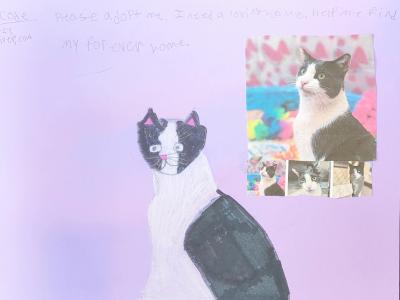
Hearts of Gold heroes
Terra emailed principals at three more Washington schools, asking whether their students would like to participate. When her third Hearts of Gold campaign resulted in a whopping 628 child artists, she rushed to find enough shelters to provide adoptable animals for all those students to illustrate. Luckily, a social media friend connected her with rescue organizations to meet the demand.
By fall 2023, Terra was eager to make Hearts of Gold’s impact even greater. Her mother had recently shared an article from Best Friends magazine with her, saying, “These are your people,” so Terra reached out to Best Friends. She received photos and bios of more than 700 animals, so she contacted all the elementary schools in her area and enlisted the help of 15 classes from eight schools. “It wasn’t just dogs and cats this time, but pigs, horses, goats, birds, chinchillas, and even a turtle,” she says. “Best Friends showed us we could do this with any pets. I thought the kids would say, ‘No, I don’t want to do a pig. I want to do a dog or cat.’ But those pigs went lickety-split. They were very popular.”
There were hundreds of animals to illustrate, but Terra didn’t want to miss a single one. When she noticed that some of the animals had slipped through the cracks, she reached out to what she calls her “heroes classrooms” — the classes of children who are particularly eager to participate and typically make art within a day.
Soon, she had 750 pieces of original art to send to the Sanctuary — and a classroom full of budding artists who she wanted to thank in person. Armed with cupcakes and a bag full of Best Friends official volunteer stickers, Terra visited one of these special classrooms.
“I got to sit down in a circle on the floor and talk to them about their art and what they’ve done,” she says. “Sitting in the silence of my car afterward, I thought to myself, I want to do this forever.”
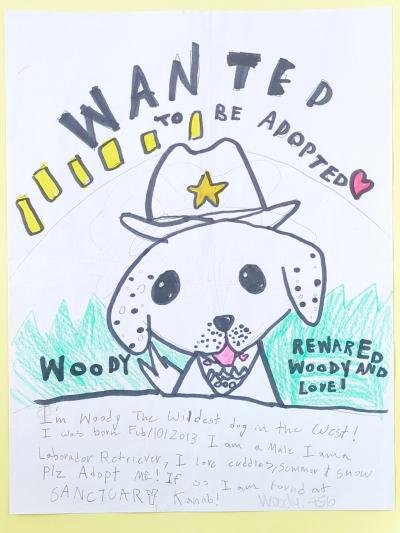
Helping more than the animals
Hearts of Gold has helped hundreds of pets in shelters get a moment in the spotlight and even find homes, all thanks to Terra and the power of her young, compassionate artists. One such animal is Jade, a 2-year-old pit bull terrier who was at Rowlett Animal Services in Rowlett, Texas. The affectionate pup spent nearly a year at the shelter until her portrait, drawn by a child participating in Hearts of Gold, caught the attention of her adopter.
“To see animals through the eyes of a child is so special,” says Savannah Greene, co-founder of MACS Friends Animal Rescue Inc. in Barrow County, Georgia. “(Kids) don’t see scars and damaged animals. They see love and animals that just want a home to be loved in forever.” The organization had 10 out of 14 animals adopted within a month of receiving Hearts of Gold artwork.
[Best Friends volunteer turns fostering into art]
But it isn’t just the animals who benefit from Hearts of Gold — it’s also the kids themselves. Terra has received a wealth of feedback from teachers about how participating students create pet portraits to relieve stress and anxiety. And many of the kids talk to their parents about the importance of adopting pets in shelters.
Clearly, Terra herself has also benefitted from the project, saying it has brought her both joy and purpose. Her entire family is now involved in creating and processing the art, including her husband and 12-year-old daughter. “Every time I work on a Hearts of Gold project, I’m filled with a sense of things being better,” she says. “If we all cared as much as these kids, imagine how the world would be.”
This article was originally published in the July/August 2024 issue of Best Friends magazine. Want more good news? Become a member and get stories like this six times a year.
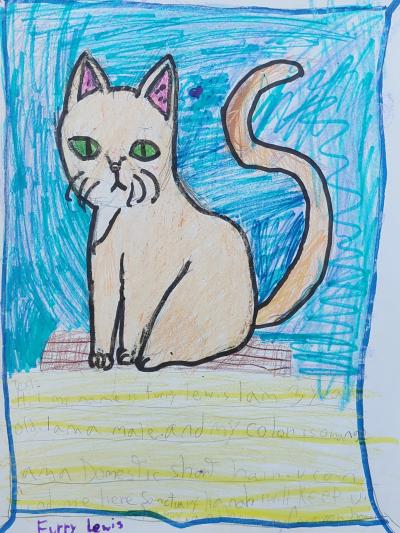
Let's make every shelter and every community no-kill in 2025
Our goal at Best Friends is to support all animal shelters in the U.S. in reaching no-kill in 2025. No-kill means saving every dog and cat in a shelter who can be saved, accounting for community safety and good quality of life for pets.
Shelter staff can’t do it alone. Saving animals in shelters is everyone’s responsibility, and it takes support and participation from the community. No-kill is possible when we work together thoughtfully, honestly, and collaboratively.
